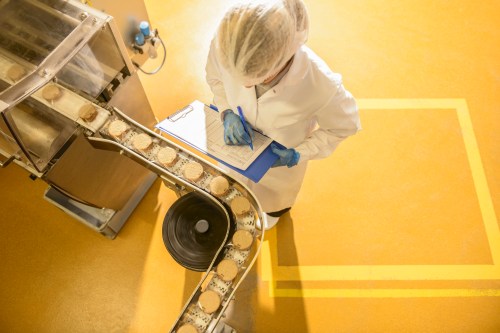While I hate to admit it, smoothies at the local smoothie bar always taste just a tad bit better than the ones I make at home. Professionally-blended smoothies unfailingly bring more of the creamy, velvety factor; never too watery, never too grainy, always just sweet enough. But what if we told you we finally had a smoothie pro’s secret…the perfect golden ratio for making the most well-balanced smoothies at home?
Experts in This Article
We indeed have excellent intel for you today. We recently caught up with Amanda Daily, product development scientist at Smoothie King, who revealed the most life-changing blending tip she’s learned on the job: The best ratio for incredibly creamy, never-clumpy smoothies. (And of course, while we had her on the line, we got as much smoothie knowledge from her as possible. This means we also learned the easiest, safest way to clean a blender—and believe us when we say it’s genius and totally hands-free.)
The key to achieving the ideal smoothie texture
Nothing is (IMO) more off-putting than a weird, watery, separated smoothie. In truth, this can be due to many different factors. Sometimes the issue is that it’s too icy and tastes like a soupy mess. Other times, it’s too clumpy—meaning that small bits of frozen fruit clog the straw, making it nearly impossible to drink altogether. But the worse is a gritty smoothie that leaves a sandy and grainy mouthfeel with every sip. Ick.
By now, many of us have probably settled on a pretty solid smoothie-making routine and recipe. (For me, it’s frozen fruit, almond milk, scoop of protein powder, repeat.) But when I swing by my local smoothie bar, it can be a rather sobering event: Damn, my homemade concoctions just don’t hit like this. Obviously, now is when it’s time to call in the pros.
Thankfully, Amanda Daily, a smoothie development scientist, has answers for us all. “The best trick for creating a creamy smoothie is to add an ingredient or two high in protein and/or fat,” Daily says. This is encouraging news, considering healthy fats are essential to overall well-being. “Healthy fats are critical for human development as they support a healthy brain, cell membranes, hormone production, and make us feel more satisfied after eating,” Brigid Titgemeier, MS, RDN, IFNCP, a functional medicine registered dietitian, previously shared with Well+Good. What’s more, Titgemeier also says that eating healthy fats also increases your absorption of fat-soluble nutrients such as vitamins A, D, E, and K and can help lower inflammation.
“The best trick for creating a creamy smoothie is to add an ingredient or two high in protein and/or fat.”—Amanda Daily, product development scientist at Smoothie King. Her go-tos include peanut butter, protein powder, and yogurt.
Regarding the ideal fats to add to smoothies, Daily says her go-tos include peanut butter, protein powder, and yogurt. Aside from their good-for-you nutrients, these ingredients help mimic that smoothie bar-esque consistency we often marvel over. However, setting up your smoothie-making sesh for success starts in the blender, meaning you’ll want to layer your ingredients properly. According to Daily, that means adding your fruits and veggies to the blender bowl, then protein powder and/or nut butter or yogurt, and lastly, ice before blending.
The golden ratio for making the perfect smoothies
Now for some fun math and, more importantly, the golden ratios for incorporating these ingredients.
Daily breaks smoothies into two categories: Those made with frozen fruit and those made with fresh fruit. For frozen, she recommends adding one cup of your favorite liquid, one and a half to two cups of frozen fruit, half a cup to a cup of raw veggies (like spinach or kale), plus one serving of your favorite protein (and/or fat). Keep in mind, when using frozen fruit, there’s no need to add ice.
For frozen smoothies, Daily recommends adding one cup of your favorite liquid, one and a half to two cups of frozen fruit, half a cup to a cup of raw veggies (like spinach or kale), plus one serving of your favorite protein (and/or fat). Keep in mind, when using frozen fruit, there’s no need to add ice.
The ratio isn’t entirely set in stone for smoothies made with fresh fruit. Instead, it’ll depend on the ingredients used. That said, Daily’s general rule regarding fresh-fruit smoothies is to mix one to one and a half cups of ice and half a cup of liquid with the fruit. For reference, Daily says that at Smoothie King, they use about three to four ounces (or one-quarter cup) of liquid, about two cups of ice, and about one cup of fresh or thawed fruit.
The easiest (and safest) way to clean a blender
Naturally, you’ll likely be left with a mess to clean up after a product smoothie session. Daily’s POV? That washing your blender should never feel like a tedious—much less a scary, injury-prone—task. According to her, the easiest way to wash a blender is to go hands-free. (!)
First, rinse the blender with clean water to remove most of the leftover liquid. Then, squirt in a dime-sized amount of dish soap and fill the blender a quarter of the way with lukewarm water. Lastly, cover the blender and turn it on at a low setting and allow the water to become sudsy and remove the leftover particles.
For an even deeper clean, Daily suggests purchasing a bottle brush so you can safely clean underneath the blender blades, too. You’re welcome!
A gut-healthy golden milk smoothie recipe:
Sign Up for Our Daily Newsletter
Get all the latest in wellness, trends, food, fitness, beauty, and more delivered right to your inbox.
Got it, you've been added to our email list.










